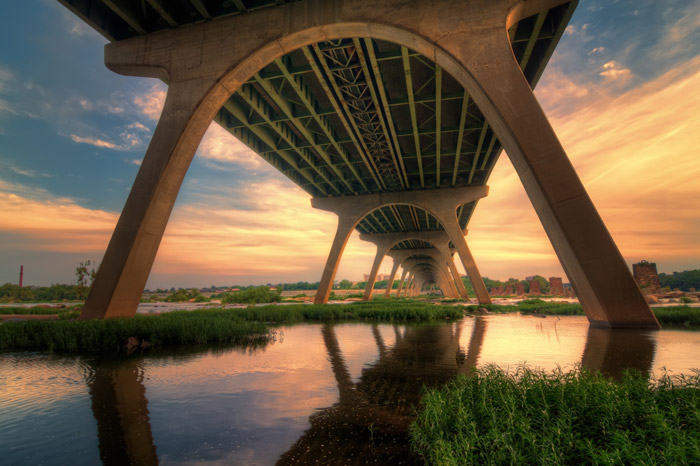Building and Burning Bridges
Jan 3, 2013
 Heading south across the James River from downtown Richmond, Virginia, the half-mile-long Manchester Bridge was completed in 1972 to replace a much lower span that was repeatedly damaged by floods.
Heading south across the James River from downtown Richmond, Virginia, the half-mile-long Manchester Bridge was completed in 1972 to replace a much lower span that was repeatedly damaged by floods.
Barely visible in the distance, near the righthand edge of this picture, are the brick piers of a former railroad bridge that was repeatedly ruined by fire.
The current Manchester Bridge includes a wide pedestrian walkway separating southbound and northbound traffic. This was required by law; in 1920, when the city of Richmond annexed what was then the city of Manchester across the river, the merger documents provided for a free pedestrian bridge across the James, in perpetuity. Until then, the only bridge charged pedestrians a toll, which was so aggravating to residents of Manchester that they voted to dissolve their city government in return for a promise of a toll-free bridge.
The ruined railroad bridge burned for the first time during the Civil War; the Confederates destroyed it–the night they drove old Dixie down–in anticipation of the fall of Richmond. It was rebuilt after the war but burned again in 1882.